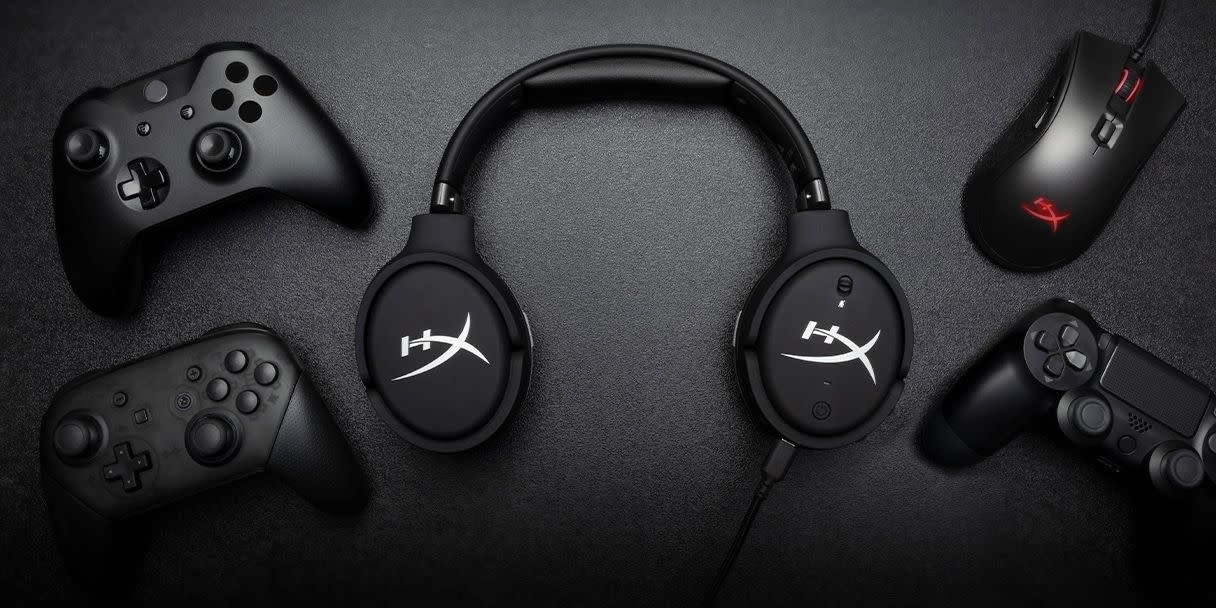The HyperX Cloud Orbit S Lets You Experience Your Games in a Whole New Way

Immediately after putting the HyperX Cloud Orbit S on to play Tom Clancy's The Division 2, we could tell that it is unlike any other gaming headset. That’s because this gaming headset uses head-tracking and 3D-emulating technologies to bring a 3D surround-sound effect to your ears.
The sound actually changes when you turn your head. With this headset, you can pinpoint the location where enemies are firing from better than practically every other headset on the market.
Comfort
The headset feels much more premium than HyperX’s other headsets. Its ear cups are soft faux leather, with just the right amount of padding to block external noise without pressing your noggin too hard. The headset is comfortable and breathable — but at 360 grams, it does feel heavy. It’s nothing too cumbersome, but it definitely feels more solid than the competition.
Design
The Cloud Orbit S sports a matte-black, soft-to-the-touch plastic build, with silver accents throughout. The headset uses tech from Audeze, which also makes gaming headsets of its own. But this one from HyperX is $70 cheaper than Audeze’s Mobius offering and it’s just as capable. The biggest difference? This one doesn’t have Bluetooth — so that means you can’t listen wirelessly. You connect it to your console, gaming PC, or device with one of the included braided cables: 3.5-millimeter, USB-A, or USB-C.

It’s worth mentioning that you can’t use the 3D effects over Bluetooth, so we’d rather save the money, anyway. Despite being a wired headset, this one still needs to be charged for the 3D audio features. HyperX says you can expect 10 hours of battery life. Unfortunately, the headset doesn’t power itself off automatically after inactivity.
Sound
The Cloud Orbit S sounds just as good and is more comfortable than the pricier Audeze Mobius, making it an excellent pick for those who want to take their gaming to new heights. Audio for games, movies, and music was all well-balanced with a not-too-strong bass, and a crystal-clear midrange. You can fine-tune EQ settings to your liking using the HyperX Orbit software. Settings are so concise you can even adjust the settings to match your head circumference for improved 3D audio.

We also considered JBL's Quantum ONE headset for this guide, which uses a gyroscope to track your head movements with the intention of providing a more immersive aural experience. During our tests with JBL's headset, not only did we find the headset to be too tight for our liking, we found it more difficult to set up than the Cloud Orbit S. Even worse, its spatial sound tech didn't always match the direction we were facing.
We were disappointed that headphones as expensive as the Cloud Orbit S don’t offer any noise-canceling technology on board — a feature the competing Quantum ONE from JBL has. This pair still isolates audio well and has a good seal, but considering their steep price, legitimate noise-cancellation tech would be appreciated.
On the plus side, the headset’s detachable boom microphone picked up audio extremely well, filters out background noise, and makes your voice will sound nice and smooth.
Wrap-Up
Although the HyperX Cloud Orbit S has a steep asking price, it's a worthy gaming headset that'll greatly heighten your overall gaming experience.
Read More:
Shop Our Technology Editor's Favorite PS4 Accessories
More Affordable Gifts for Gamers This Way
The Most Talked-About Video Games This Year
Follow BestProducts.com on Facebook, Instagram, Twitter, and Pinterest!
You Might Also Like